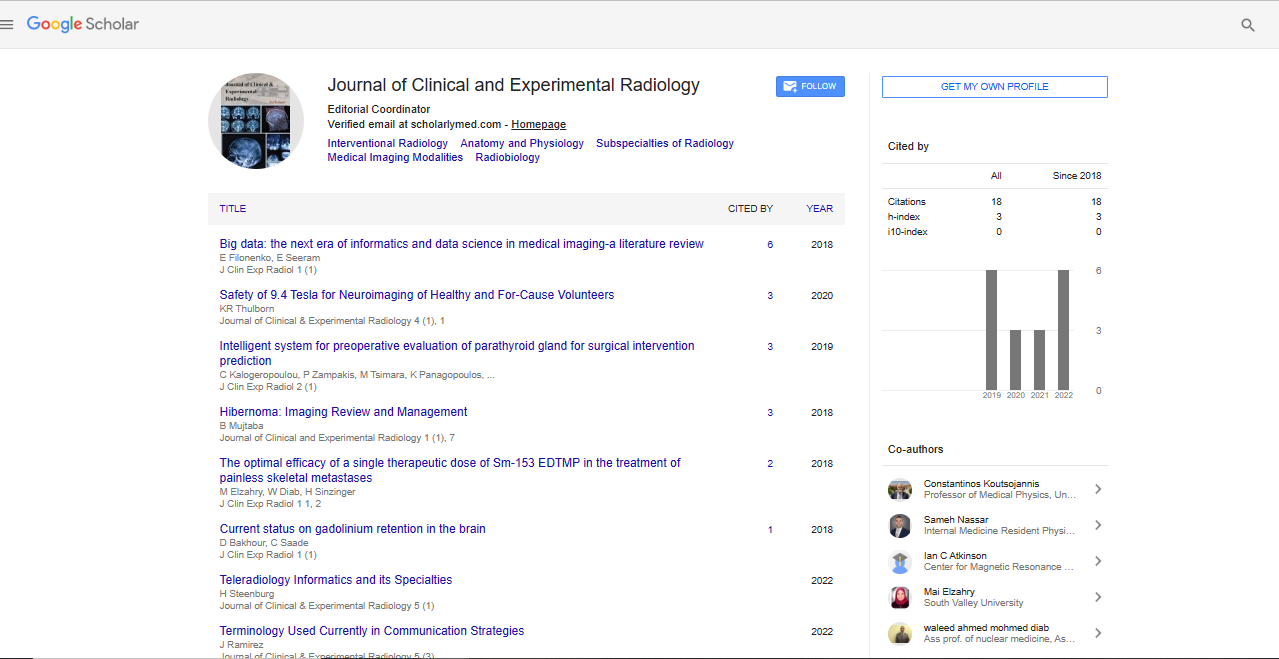Short Communication, J Clin Exp Radiol Vol: 4 Issue: 4
IMPLICATING IMMUNOTHERAPY IN MYASTHENIA GRAVIS
Blessie Nelson
Sinai Hospital, USA
Abstract
Myasthenia gravis is an autoimmune neuromuscular disorder traditionally seen in bimodal distribution in young women in their 20s-30s or older men in their 60s-70s. Discovery of immunotherapy has brought immense hope in survival outcomes for patients with malignant melanoma, lung, renal and head/neck cancers but it also opens Pandora’s box of immune-related toxicities for which early recognition and appropriate clinical management are paramount. Here we describe a case of immunotherapy induced myasthenia gravis de novo. A 77-year-old man with HPV+ stage IVA squamous cell carcinoma of the tongue presented with sudden onset orthopnea and dyspnea on exertion for the past day. One week ago, he received his second cycle of nivolumab as part of his neoadjuvant therapy. He was seen at an outside hospital and was found to be acute hypercapnic respiratory failure and placed on BiPAP. Additionally
Keywords: Radiology
Introduction
Myasthenia gravis is an autoimmune neuromuscular disorder traditionally seen in bimodal distribution in young women in their 20s-30s or older men in their 60s-70s. Discovery of immunotherapy has brought immense hope in survival outcomes for patients with malignant melanoma, lung, renal and head/neck cancers but it also opens Pandora’s box of immune-related toxicities for which early recognition and appropriate clinical management are paramount. Here we describe a case of immunotherapy induced myasthenia gravis de novo. A 77-year-old man with HPV+ stage IVA squamous cell carcinoma of the tongue presented with sudden onset orthopnea and dyspnea on exertion for the past day. One week ago, he received his second cycle of nivolumab as part of his neoadjuvant therapy. He was seen at an outside hospital and was found to be acute hypercapnic respiratory failure and placed on BiPAP. Additionally, he was started on empiric treatment for community-acquired pneumonia with levofloxacin and doxycycline and transferred to a tertiary care center for further management.
 Spanish
Spanish  Chinese
Chinese  Russian
Russian  German
German  French
French  Japanese
Japanese  Portuguese
Portuguese  Hindi
Hindi 